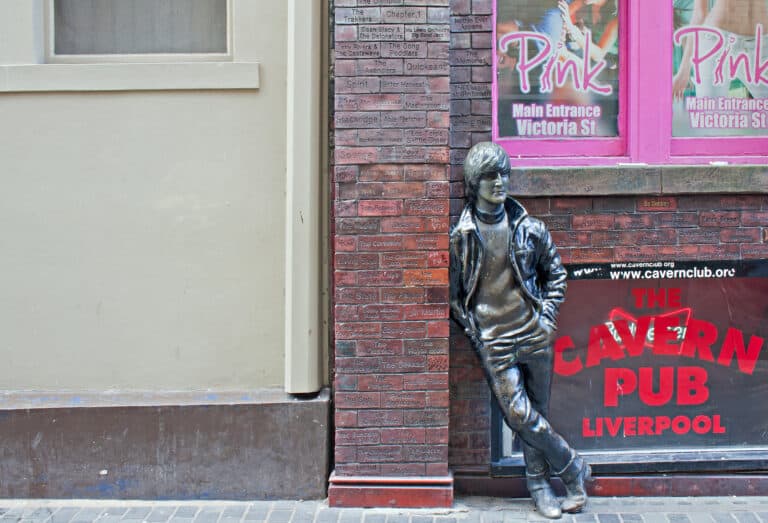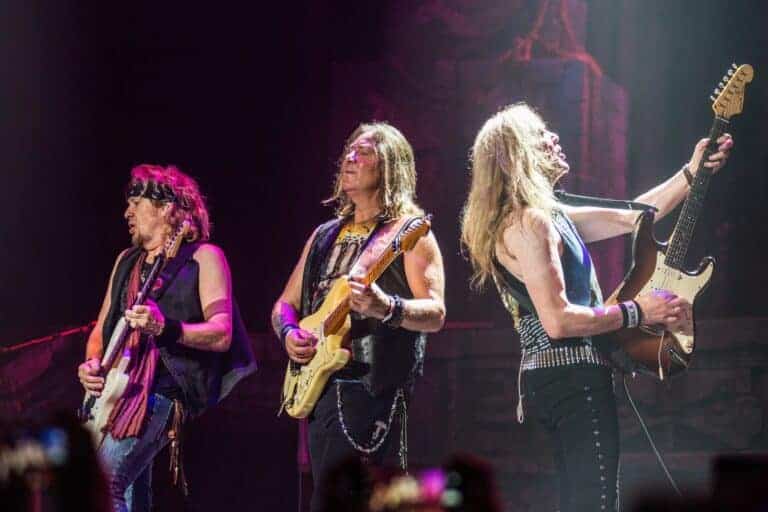Led Zeppelin
By Candace Horgan
Mix, Oct 1, 2003
During Led Zeppelin’s 12 years together, they set the standard for hard rock. So many of their songs have come to be regarded as classics, and you can still hear their influence all over the radio to this day. While Zeppelin were acknowledged masters in the studio — thanks in large part to the expertise and dedication of guitarist Jimmy Page and drummer John Bonham, both veteran studio hands by the time the group started in the late ’60s — their live prowess has been somewhat overlooked through the years. After all, aside from hundreds of mostly poor-sounding bootlegs and the soundtrack for their rather uneven concert movie, The Song Remains the Same, there has been precious little to remind us what a powerhouse the group was onstage when they were really “on.” Finally, 23 years after Bonham’s untimely death ended the band, Led Zeppelin has released a bounty of exceptional live material that shows what this band was all about: A five-hour DVD, titled simply Led Zeppelin, and a new CD, How the West Was Won, have proved to be manna from heaven for Zeppelin fans everywhere. And, considering both the CD and DVD debuted at Number One, it’s clear that there has been a lot of pent-up demand for live Zeppelin material.
Both the CD and DVD were mixed by Kevin Shirley, who got to know Jimmy Page while working on the guitarist’s Live at the Greek CD. “I produced the Black Crowes, and Jimmy joined them for a run of live dates in 1999,” Shirley recalls. “I saw the show in New York, and then I went to California and recorded the shows, took the tapes away, and fixed them up a little and mixed them. I did Live at the Greek without any input from anyone, as it wasn’t originally going to be an official release. But I think everyone was impressed with it; certainly Jimmy said he was. Then, when Jimmy decided to do a new [Zeppelin] DVD, he started looking for someone familiar with the modern applications necessary for surround sound mixing. If you listen to the Royal Albert Hall [concert] opening in 5.1, you can see Jimmy had this audio concept really early on of giving people a sense of the band going onstage and the audience swells around you. We had a meeting to discuss the requirements needed for the DVD project audio, and afterward, he asked if I would be interested in ‘helping’ him. That completed the circle for me, since Zeppelin got me into the business as a fan back when I was 17.”
There were mountains of tapes to go through. Most of what they found was in good condition, though Shirley said they did bake the tapes as a precaution before loading them into a Pro Tools|HD system. “Obviously, after the 30-odd years that have passed, we had to do some kind of work to make them sound competitive in the present sonic environment. We recorded it all at 96k through the Pro Tools 192|HD converters. All of the originals were multitrack, from 6- to 24-track masters. It was a fantastic environment to work in. We spent most of May 2003 baking the tapes and listening to them. We listened to about 15 shows and made notes on them. Jimmy was very involved with both the audio and video. I think it was out of that the How the West Was Won CD came about. We loved the performances, but there was no video. This started as a DVD project, but we wanted to get those L.A. [audio-only] performances out, too!”
Shirley mixed the CD and DVD at SARM West Studios in London using an SSL 9000 J. He had dozens of effects at his disposal, including API compressors and EQ, but he says he didn’t use too many because he wanted to capture the essence of being at a Zeppelin concert. “I used an 1176 to compress Robert’s vocals, a Peavey Kosmos Pro on Jimmy’s guitar, and on the drums, I used an old Fairchild stereo compressor. One of Jimmy’s comments when we started was, ‘I want to hear lots of cymbals,’ and I used the Fairchild for that. The kick drum chain was pretty complex, and on the bass and keys, I used a variety of the old compressors, as well as six Fatso compressors chained together for the surround mix and the SSL console compressor for the 2-channel mix. They sound great; they are clean and variable and dynamic.
“I had API EQ over the stereo bus. Sometimes, I used a Drawmer 1961 tube EQ on the guitar. Part of my philosophy is to not do anything except closely replicate how they may have sounded onstage. When you stand onstage, you can hear this massive thump on Jimmy’s guitar, and in the studio, it can sound more like a buzz, so I used the Peavey to try to keep that thump in there.”
One of Shirley’s goals with the DVD was to give the viewer the sensation of being in the fourth row at a Zeppelin concert. Most of what is in the rear channels is the audience, though there are some exceptions. “I didn’t want to make the surround too tricky since we only have three instruments onstage. But I did a little bit of stuff with the instruments in the rear channels on ‘Dazed and Confused’ and ‘What Is and What Should Never Be,’ where the panning is part of the song, and ‘Dazed’ has that violin bow section where Jimmy creates this very ethereal sound, this otherworldly feeling.
“One problem was just trying to capture the essence of Zeppelin, like that big king drum thing Bonham had on ‘When the Levee Breaks,’ which I think is a definitive sound of Zeppelin. But I think consistency was the biggest problem. The band had changed by the Knebworth concerts [later on the DVD set], and all these shows were played in different environments, so maintaining sonic consistency from the small halls to the large outdoor ones was the big challenge.”
In putting together the DVD, Shirley and Page always put the audio first: “We didn’t mix anything to picture; the picture was done to the audio. We did the mixes first. Sometimes, we had to go back and adjust the audio, depending on what happened visually. Technically speaking, I think it was pretty straightforward. George Marino at Sterling Sound in New York mastered a lot of it, except for the Royal Hall stuff, which we did with Tim Young in London. I don’t think there was an awful lot that had to be done to the tapes. I think that I mixed with a sub that was a little big for the mix room, so if you turn up the sub in your surround system, it will be a little more like I meant it to be. I didn’t use a sub on the stereo mix. I used KRK 6000s for monitoring everything and a big Augspuger sub on the surround, which really was too big. It sounds phenomenal in the room, though. The kick drum sounds about 12 feet high.”
Another important part of the audio for Shirley was offering a 2-track mix in addition to the 5.1 mix, because not everyone has a surround system. Shirley is also working on expanding the How the West Was Won CD into a 5.1 DVD-Audio mix that will come out later this year. “That 2-track mix on the DVD is a whole separate mix. There will be a surround DVD-Audio mix of How the West Was Won and will also have a Dolby Digital and DTS mix, as well as uncompressed high-resolution stereo and surround mixes.”
Shirley found working with Page to be very rewarding. “Jimmy is amazing to work with. He is the producer of Zeppelin, and I think he is very happy with what we did and what we ended up with. There is more from the concerts, but if it isn’t on the DVD, there is a reason for it. For instance, there is a wonderful performance of ‘Ten Years Gone’ at Knebworth, and for whatever reason, I didn’t have the benefit of the audio. There was no guitar on the multitrack we had. I tried to pull it out from other pieces, like the vocal mics, but we had to let it go, which was a big pity. Suffice it to say, the CD was meant to be a very good overview of a single Zeppelin concert. As anyone who followed Zeppelin knows, they played differently every night. All through their career, every time they came out onstage, they were a slightly different band.”



